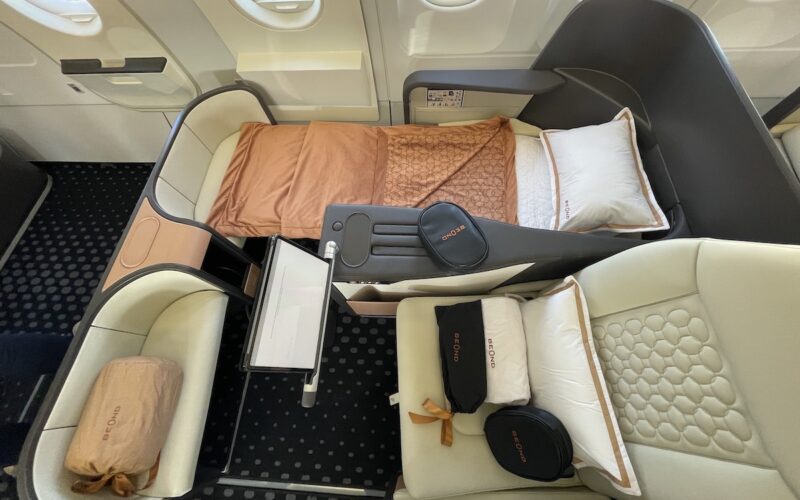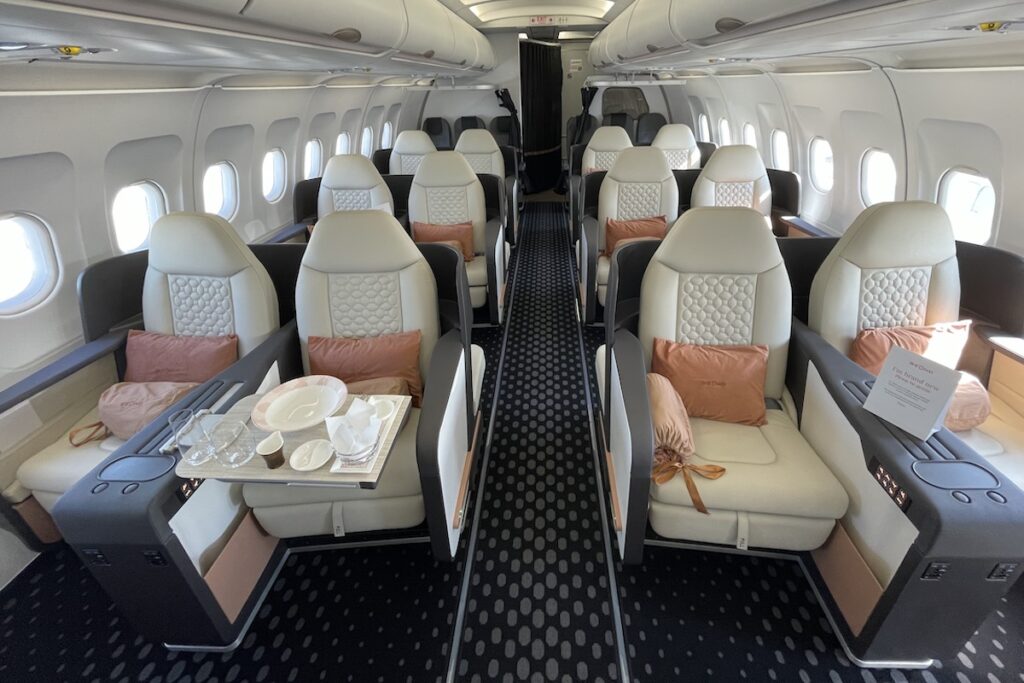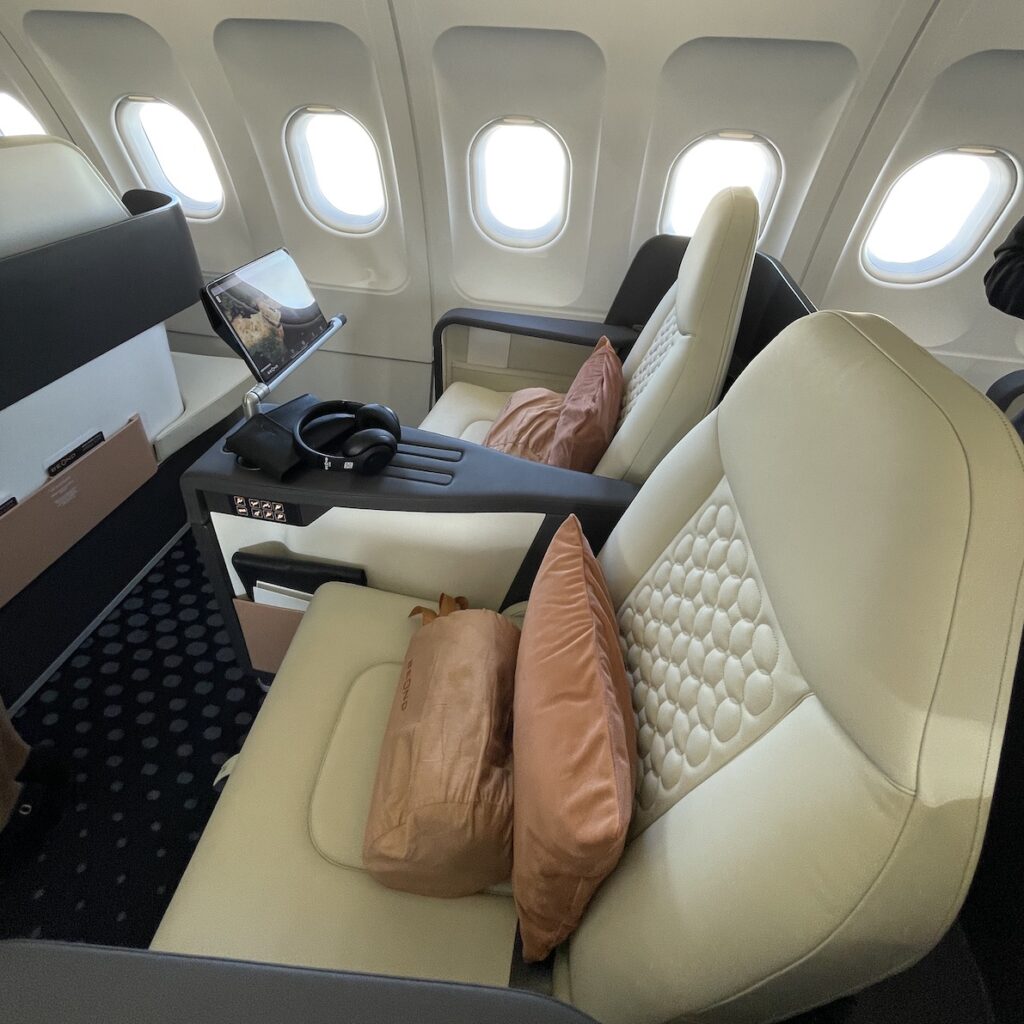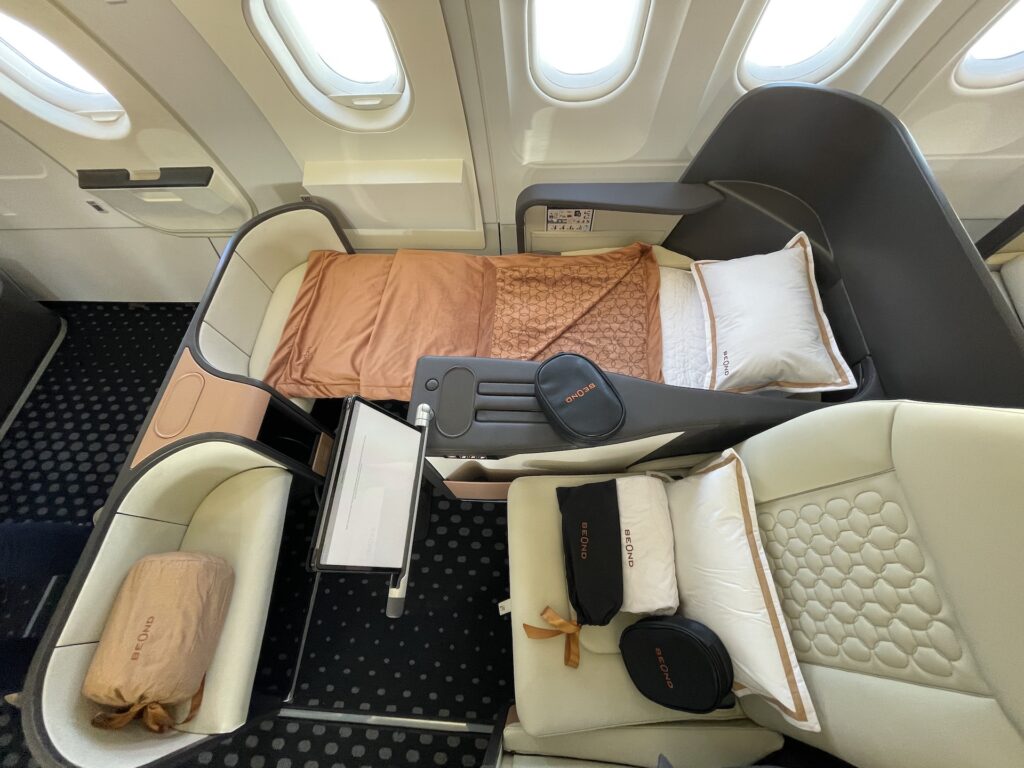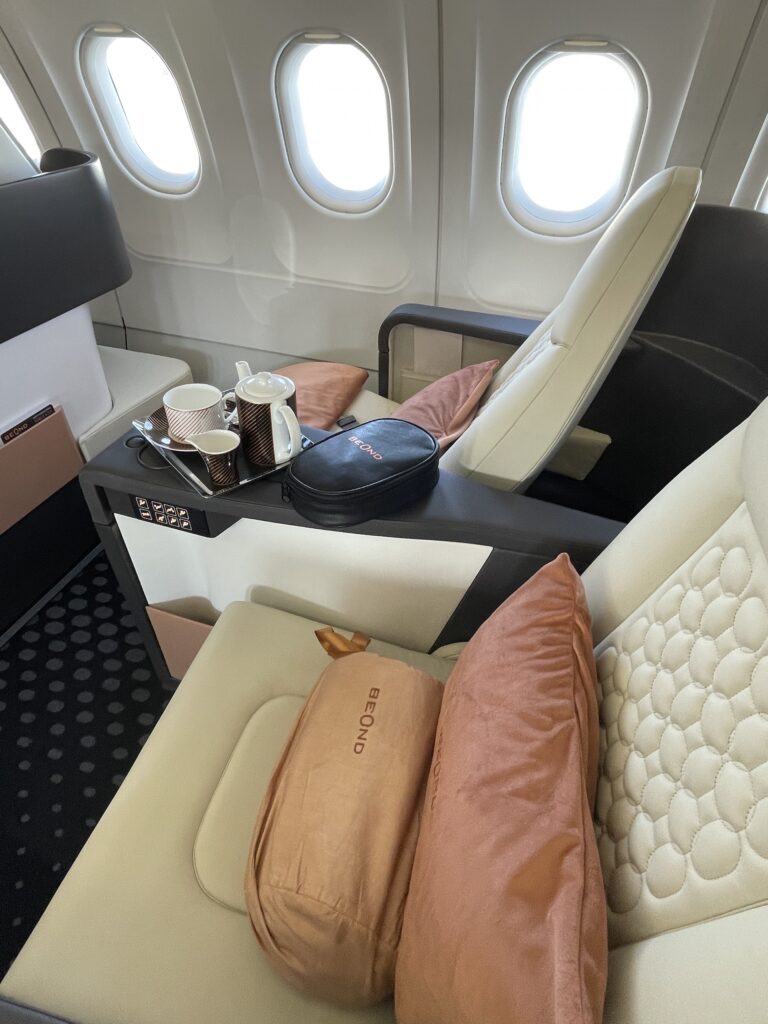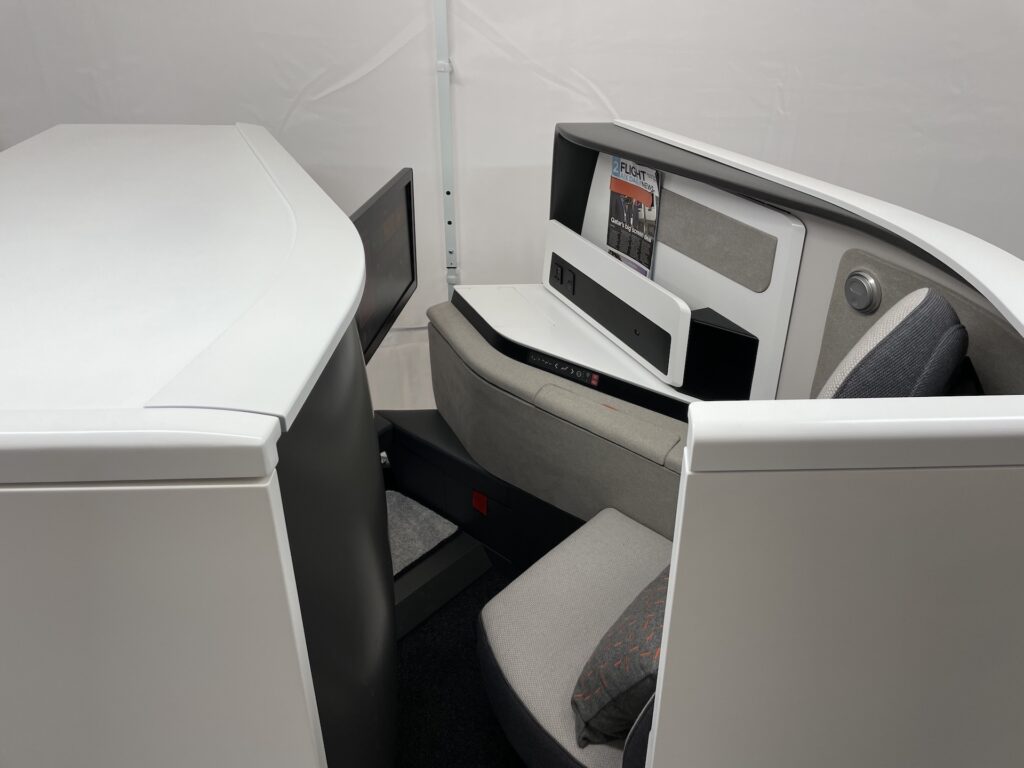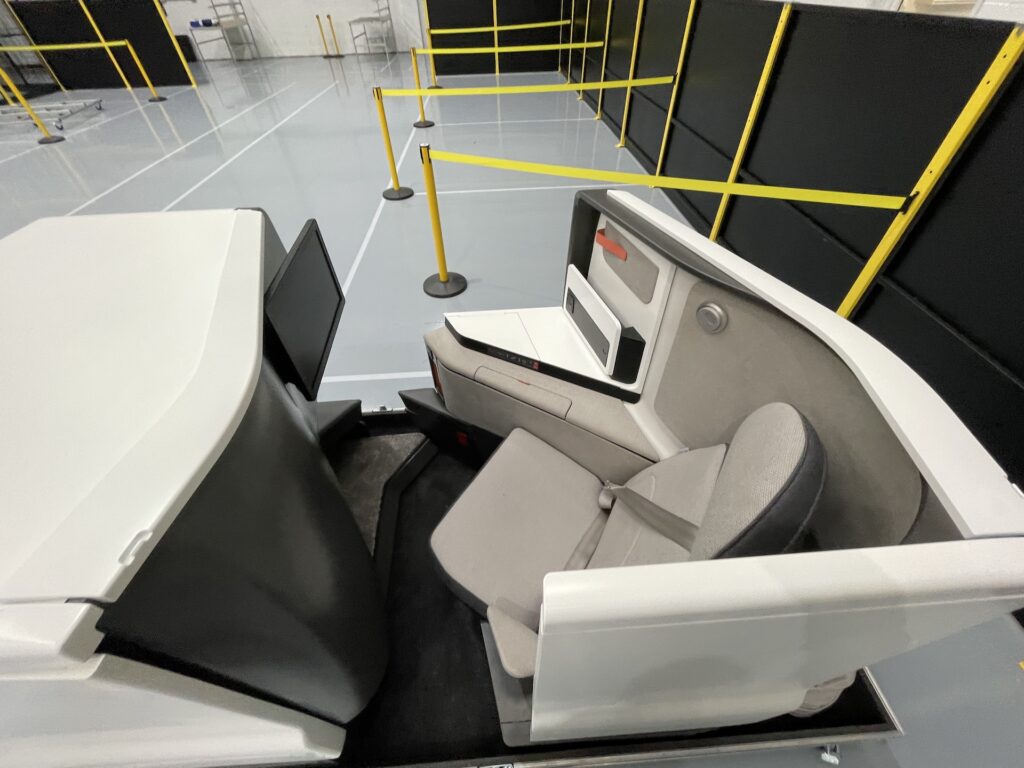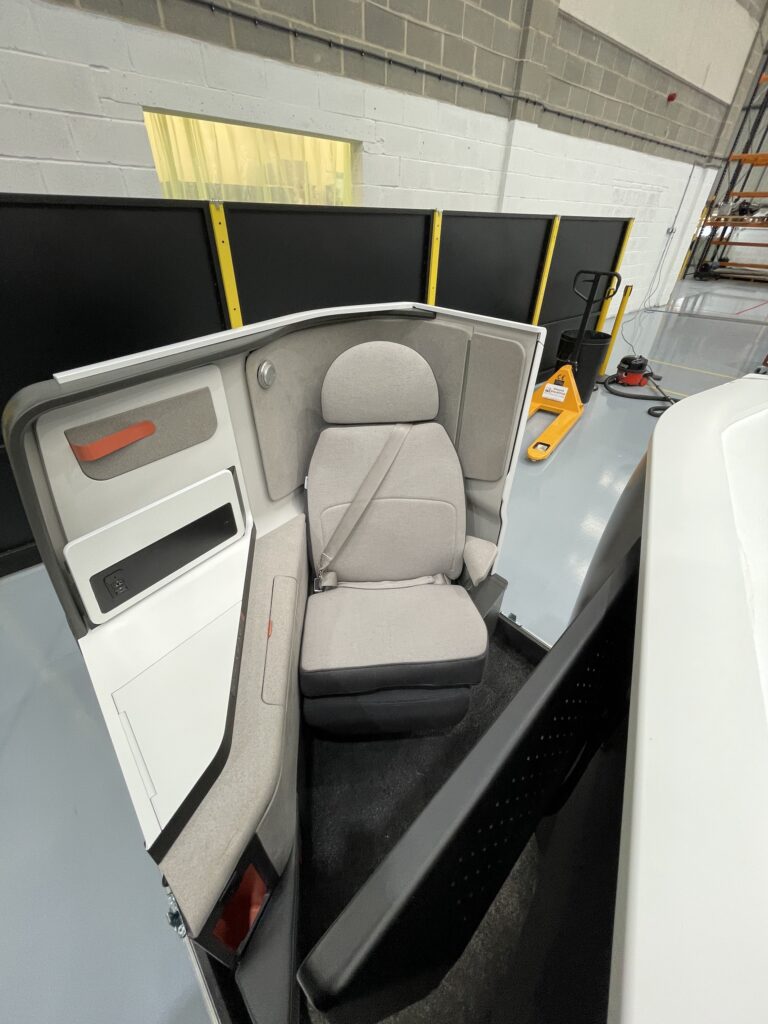The next time you fly premium, take a minute or two to appreciate the thought and craftmanship that goes into the engineering marvel that is a modern business class seat.
It must combine an elegant design with superb ergonomics and state-of-the art electronics, all while being lightweight and compliant with certification requirements.
Airlines don’t like to take chances. With so many carriers relying on the front of the cabin to turn a profit, the long term financial and marketing implications of choosing the right business class seat are significant.
There’s a race to see which company has the most pleasing business class in the skies. But with the market increasingly concentrated in the hands of a few large manufacturers, some airlines fear lagging behind, sidelined in favor of large operators capable of ordering at scale.
Therefore, it’s unsurprising that some carriers are turning to smaller aircraft seat manufacturers for fresh ideas and shorter lead times.
A number of boutique seat makers have embraced this market opportunity to come up with innovative business class concepts with the potential to set new standards in the industry.
AeroTime spoke to two such companies, namely Italian designer and manufacturer Optimares, and British startup Unum, in order to learn more about their distinctive market approach and what travelers can expect in terms of experience and comfort.
The seat boutique
“We aim to empower the passenger experience through design,” explained Alessandro Braca, CEO of Optimares. “Instead of creating capacity, we create capabilities.”
The Italian firm takes pride in its eclectic mix of customers, which includes the likes of Hawaiian Airlines, the British government’s VIP squadron (operated by Titan Airways on behalf of His Majesty’s Government) and BeOnd, a luxury airline based in the Maldives.
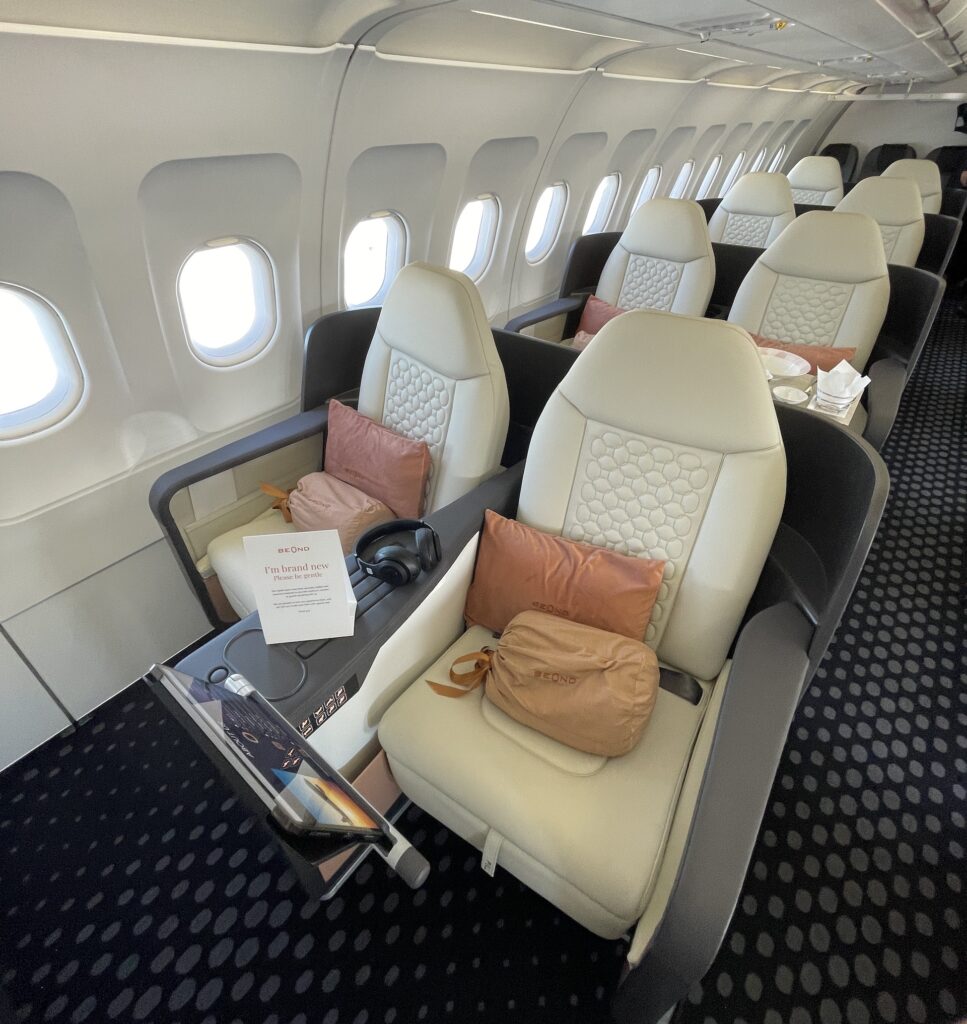
Aware of where the strengths and limitations, Optimares has avoided any thought of vertical integration. Instead, the Italian firm focuses on those parts of the value chain where it can add the most value – designing and certifying new seat concepts. Parts and components are sourced from different external suppliers and then assembled at their facility in Sezze Scalo, just south of Rome.
“We don’t want to reinvent the wheel,” Braca stated. “This way of working allows us to work with best-in-class suppliers and be very flexible.”
Braca also highlighted Optimares’ extremely personalized approach, which sees the company taking on no more than three or four projects at any one time.
“When lots of aircraft out there are using the same mainstream seats, there is going to be an opportunity for some airlines to offer something different,” Braca said, going on to explain how each of its designs is based on the specific needs and requirements of the customer in question.
“Mass production offers consistency through the accumulated experience,” Braca continued. “But some airlines also want something different to be better able to compete with the big players.”
While business class seats are the main focus for Optimares, the Italian firm also includes economy class seats in its product portfolio. These, Braca explained, were developed at the request of a customer but have never been actively marketed.
“Once a customer came to see us here in Italy in order to check the business class seats and, while he was touring the workshop asked us whether we could make an economy class seat as well,” Braca said. “That’s how we got it.”
“And you know what?” Braca assed. “Other than the seat pitch, it doesn’t really feel like an economy class either.”
A project that Braca is particularly proud of is the recent completion of BeOnd’s first aircraft cabin, which was publicly showcased at the 2023 Dubai Airshow, just ahead of the airline’s inaugural service between Munich (MUC) and Male (MLE) via Dubai (DXB) on November 15, 2023.
“That was a rather complex project from the point of view of product strategy,” Braca said. “BeOnd wanted to develop a truly luxury-feeling product.”
Of this particular seat, created in collaboration with designer Paul Wylde, Braca said: “It’s a project driven by impressions. There are many things that you don’t see but you can feel. Also, there is no plastic, it doesn’t look cheap. The surfaces are either painted carbon fiber, leather or surface-treated metal.”
Given that Optimares only had a few months to complete the BeOnd project, its designers opted to adapt a seat model, called ‘Vivaldi’, which had already been certified. However, the next iteration of the seats for the luxury airline startup is already in the works. The ‘Vivaldi 2.0.’ model should be rolled out in the near future as BeOnd continues to expand its fleet with new Airbus A321neo aircraft.
In parallel to this project, Optimares is also working on an iteration of another innovative seat concept it has developed, called ‘SoFab’ – a new seat designed from the ground up. The concept was presented at the 2023 Aircraft Interiors Expo and has also won an iF Design Award.
Braca went on to highlight the fact that the passenger would not need to press too many buttons to operate the seat because it is already designed to adapt to the passenger – for example, when in a relaxed position. Having far fewer components than a traditional electrically reclining seat significantly reduces weight and results in reduced operation and maintenance complexity, lower energy use and a simplified supply chain.
The minimalist approach
Sophistication through simplicity is also one of the core tenets at Unum, a young British company that has recently entered the business class seat sector.
When explaining the company’s design philosophy, Alan McInnes, Unum’s VP of Business Development, quoted French aviator and writer Antoine of Saint-Éxupéry: “Perfection is achieved, not when there is nothing more to add, but when there is nothing left to take away.”
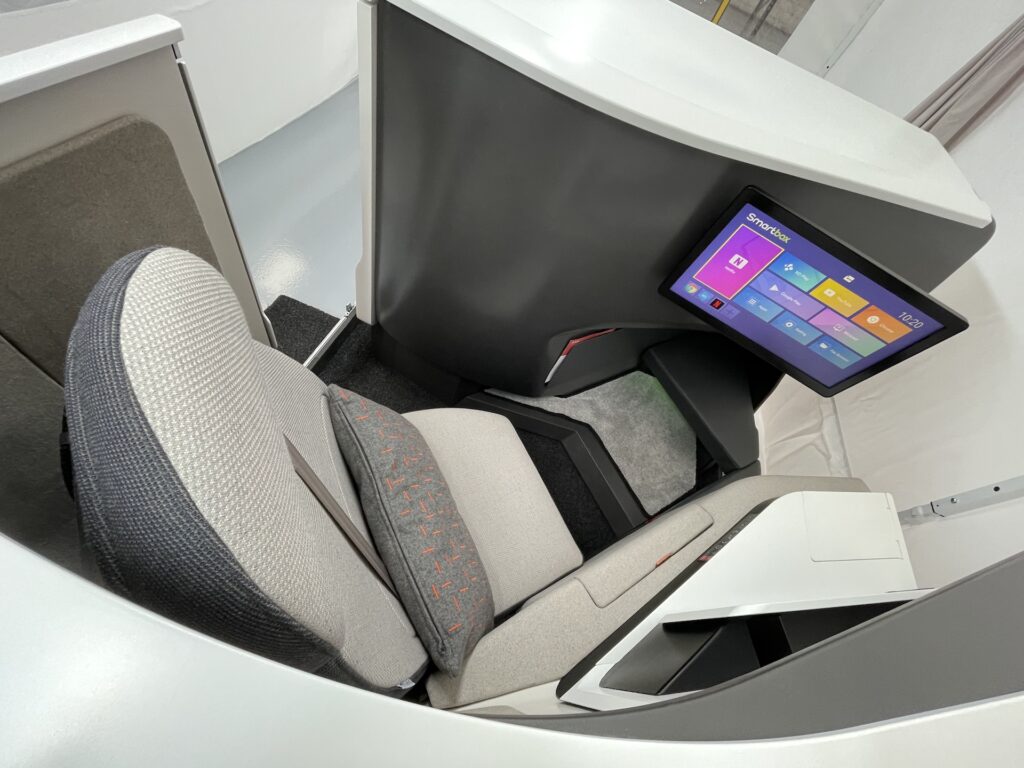
Unum is the brainchild of Chris Brady, a veteran of the airline industry. Brady was instrumental in the roll-out of Virgin Atlantic’s Upper Class business class product in the mid-1990s and later went on to co-found and grow aircraft seat manufacturer Acro Aircraft Seating, ultimately selling it to a Chinese company in 2017.
Although he left Acro Aircraft Seating shortly after its sale, Brady continued to think about ways in which to improve the passenger experience through new products and concepts. This is how he became convinced that there was an opportunity in the market for a new type of business class seat, one that provided enhanced levels of passenger comfort while doing away with a number of superfluous elements.
Another aspect of Unum’s offering, particularly at a time of general industrial capacity constraints, is how its integrated design and manufacturing process has been designed to work with short supply chains, responding to demand with agility while also reducing the carbon footprint.
AeroTime visited Unum’s brand-new manufacturing facility near London-Gatwick Airport (LGW) to take a closer look at how the startup is gearing up for serial production.
“It is not enough to have a conceptually good product,” McInnes explained while guiding AeroTime around the factory floor. “You must show that you can deliver it. We design, procure, assemble. This is what we do.”
While still mostly empty, Unum’s production facility is slowly starting to fill with the equipment it will need to fulfill its plan to deliver 30 shipsets [the quantity of seats required to equip one aircraft – ed. note] a month by 2025. This figure should then jump to 90 shipsets per month over the years ahead.
However, Unum has already produced several prototypes, which McInnes used to demonstrate the different innovative elements the company has added to its seats. He explained that one of the criticisms of the herringbone-type seats currently used by many airlines in business class is a rather constrained footwell.
To solve this issue, Unum has repositioned mechanisms, removed some non-essential structural elements and lowered the level of the seat when in a fully flat position. “We’ve gone lower for space. Space equals comfort,” McInnes said.
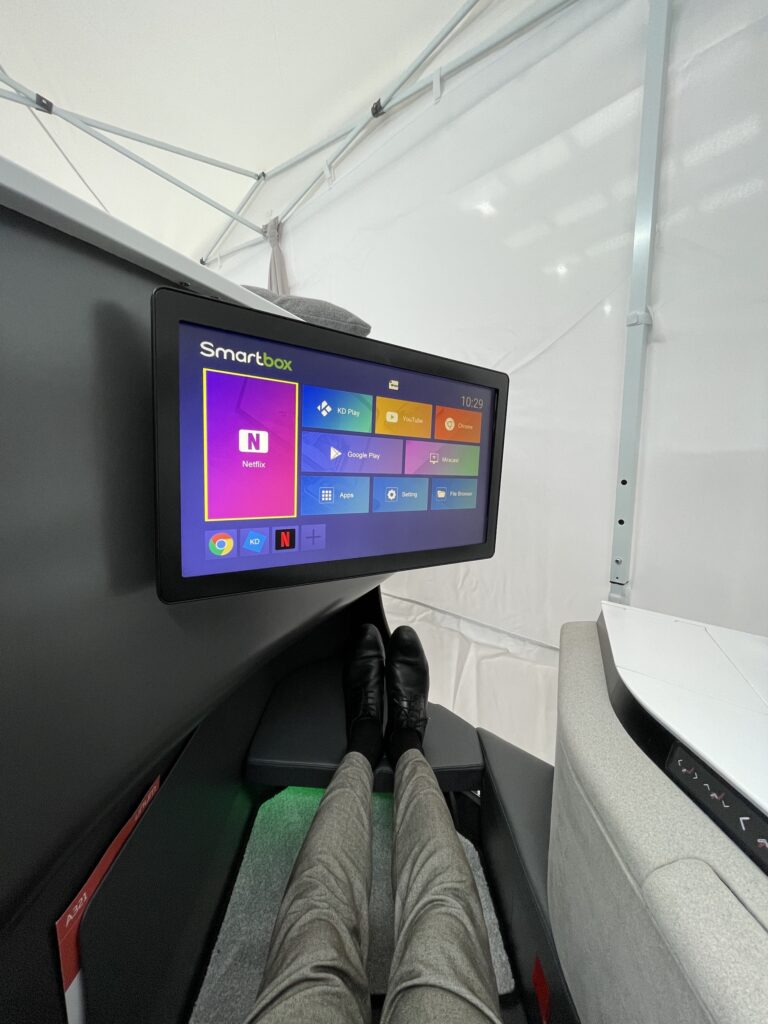
Another unique Unum feature is the Zero G position, or what McInnes calls “the astronaut position”, which allows the passenger to position their knees higher than their hips when in a resting position.
While more traditional business class seats typically have a fixed seat pan and an adjustable back rest, Unum has designed the ‘Scimitar’ seat mechanism, with the seat pan cantilevered off the back rest. This enables more seat positions than a traditional business class seat, by adjusting the relative position of both elements.
“We are offering nearly infinite adjustability because of the way the seat is constructed,” McInnes added while conducting a practical demonstration of the system.
Following the presentation of its first seat model, called Unum One, at the 2022 Aircraft Interiors Expo in Hamburg, the British firm started work on Unum Two, which has a forward-facing layout as well as featuring the Scimitar seat mechanism. Unum plans to produce business class seats for both narrow and widebody aircraft.
McInnes told AeroTime that Unum has already signed a Letter of Intent (LOI) with an undisclosed launch customer.
Regardless of which airlines end up installing this new generation of business class seat, it looks like there is still considerable scope for innovation within the premium cabin.
Continued demand for business class travel, mostly driven by leisure travelers going upmarket, coupled with the persistent capacity constraints experienced by many of the industry giants, may just provide the window of opportunity for new, young entrants to try their luck in this market.

